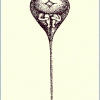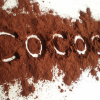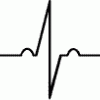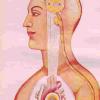So nogo-a inhibits neuron growth in adults. Apparently there are nogo-A inhibitors (GSK1223249) that are in clinical trials right now for curing neurodegenerative diseases like ALS and spinal cord injuries and don't seem to have any severe adverse effects in phase 1 trials (http://www.gsk-clini...ound=GSK1223249).
The more optimistic raving seems to think that blocking the nogo receptor 1 gene, which nogo-a is a ligand for, is a way of making old brains young again:
http://news.yale.edu...old-brain-young
Scientists have long known that the young and old brains are very different. Adolescent brains are more malleable or plastic, which allows them to learn languages more quickly than adults and speeds recovery from brain injuries. The comparative rigidity of the adult brain results in part from the function of a single gene that slows the rapid change in synaptic connections between neurons.
By monitoring the synapses in living mice over weeks and months, Yale researchers have identified the key genetic switch for brain maturation a study released March 6 in the journal Neuron. The Nogo Receptor 1 gene is required to suppress high levels of plasticity in the adolescent brain and create the relatively quiescent levels of plasticity in adulthood. In mice without this gene, juvenile levels of brain plasticity persist throughout adulthood. When researchers blocked the function of this gene in old mice, they reset the old brain to adolescent levels of plasticity.
Children being better language learners than adults is actually somewhat controversial...
http://en.wikipedia....riod_hypothesis
Also LTP is increased by restricting NogoA.
http://www.pnas.org/...1/18/1013322108
NogoA restricts synaptic plasticity in the adult hippocampus on a fast time scale
Abstract
Whereas the role of NogoA in limiting axonal fiber growth and regeneration following an injury of the mammalian central nervous system (CNS) is well known, its physiological functions in the mature uninjured CNS are less well characterized. NogoA is mainly expressed by oligodendrocytes, but also by subpopulations of neurons, in particular in plastic regions of the CNS, e.g., in the hippocampus where it is found at synaptic sites. We analyzed synaptic transmission as well as long-term synaptic plasticity (long-term potentiation, LTP) in the presence of function blocking anti-NogoA or anti-Nogo receptor (NgR) antibodies and in NogoA KO mice. Whereas baseline synaptic transmission, short-term plasticity and long-term depression were not affected by either approach, long-term potentiation was significantly increased following NogoA or NgR1 neutralization. Synaptic potentiation thus seems to be restricted by NogoA. Surprisingly, synaptic weakening was not affected by interfering with NogoA signaling. Mechanistically of interest is the observation that by blockade of the GABAA receptors normal synaptic strengthening reoccurred in the absence of NogoA signaling. The present results show a unique role of NogoA expressed in the adult hippocampus in restricting physiological synaptic plasticity on a very fast time scale. NogoA could thus serve as an important negative regulator of functional and structural plasticity in mature neuronal networks.
There's also interest in them as a means of healing spinal cord injuries:
http://www.scienceda...71106122525.htm
To restore fiber-growing ability to the brain and spinal cord, Schwab first prevented NOGO-A from fulfilling its function as an inhibitor of fiber growth and regeneration in laboratory animals. He showed that the anti-NOGO-A antibody allowed fiber tracts of the rats' damaged spinal cords to regenerate partially, thereby restoring some motor function.
Some more stuff about synaptic plasticity and nogo-1, this time from the receptor angle, not the ligand (nogo-a).
http://www.ncbi.nlm....pubmed/23473316
Anatomical plasticity of adult brain is titrated by nogo receptor 1.
Akbik FV, Bhagat SM, Patel PR, Cafferty WB, Strittmatter SM.
Source
Cellular Neuroscience, Neurodegeneration and Repair Program, Departments of Neurology and Neurobiology, Yale University School of Medicine, New Haven, CT 06536, USA.
Abstract
Experience rearranges anatomical connectivity in the brain, but such plasticity is suppressed in adulthood. We examined the turnover of dendritic spines and axonal varicosities in the somatosensory cortex of mice lacking Nogo Receptor 1 (NgR1). Through adolescence, the anatomy and plasticity of ngr1 null mice are indistinguishable from control, but suppression of turnover after age 26 days fails to occur in ngr1-/- mice. Adolescent anatomical plasticity can be restored to 1-year-old mice by conditional deletion of ngr1. Suppression of anatomical dynamics by NgR1 is cell autonomous and is phenocopied by deletion of Nogo-A ligand. Whisker removal deprives the somatosensory cortex of experience-dependent input and reduces dendritic spine turnover in adult ngr1-/- mice to control levels, while an acutely enriched environment increases dendritic spine dynamics in control mice to the level of ngr1-/- mice in a standard environment. Thus, NgR1 determines the low set point for synaptic turnover in adult cerebral cortex.
So are there any supplements or whatever that can inhibit nogo-a? Well here some Chinese supplement hype:
http://www.ncbi.nlm....pubmed/20473744
Research on the mechanism of Zuogui Pill and Yougui Pill in promoting axonal regeneration in model rats of autoimmune encephalomyelitis.
....
The expression of NGF was even stronger during the remission stage, and a better effect was shown by YGP. As for Nogo A and Ng R expressions, they were significantly lower than those in the model group at the acute stage (P<0.05), but a better effect was shown by ZGP.
CONCLUSIONS:
ZGP and YGP can prevent axonal injury and promote the axonal regeneration in rats of EAE, and the possible mechanism is to increase the expression of NGF and reduce the expression of Nogo A and its receptor. However, some differences are observed between the two Chinese preparations in their acting times and points, which provides a certain basis for revealing the modern connotation of the Chinese medicine theory on tonifying Shen ()-yin and Shen-yang.
Here's the yougui pill
http://www.foodbub.c...Yougui-Pill.htm
[Common Name]Yougui Pill
[Ingredients]Radix Rehmanniae Preparata,Chuan Radix Aconiti Lateralis Preparata, Cinnamon, Yam, Cornus Officinalis, China Dodder, Colla Cornus Cervi, Barbary Wolfberry Fruit, Angelica, Lotus Seeds;
and the zougui pill
http://www.foodbub.c...Zuogui-Pill.htm
[Common Name]Zuogui Pill
[Ingredients]Radix Rehmanniae Preparata, Barbary Wolfberry Fruit, Yam, Cornus Officinalis, China Dodder, Colla Cornus Cervi, Chinemys reevesii, Chuan Achyranthes;
More in a bit...
Edited by abelard lindsay, 20 March 2013 - 04:34 AM.































































